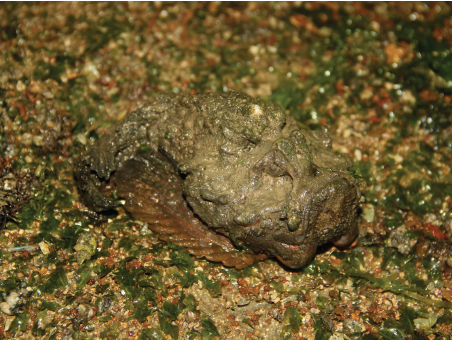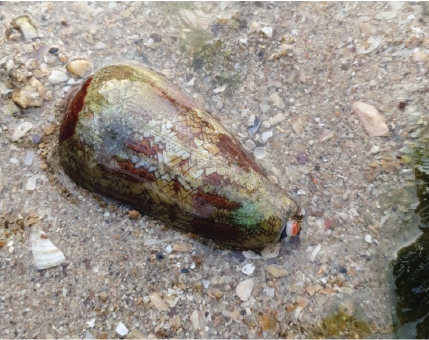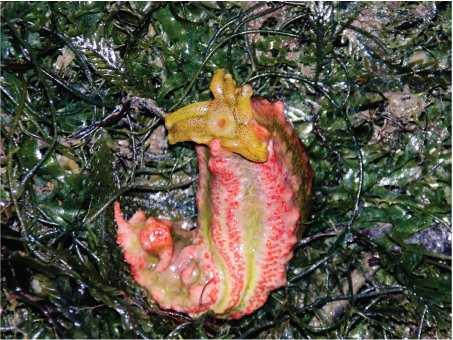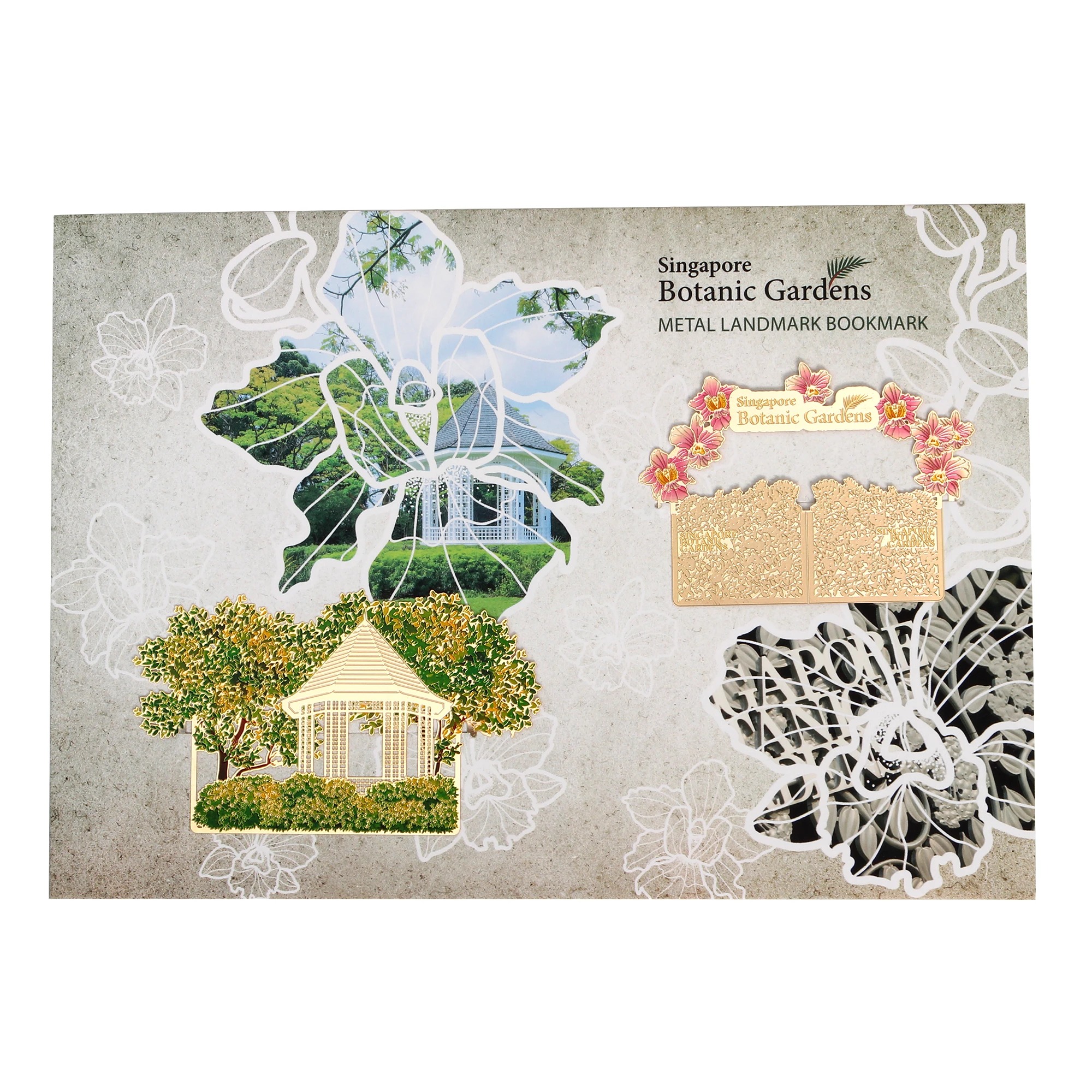Now Entering the Intertidal Zone
You are moving into a place where land and ocean meet, a place where little creatures burrow, huddle and creep. You are crossing over into the intertidal zone.
So… what exactly is the intertidal zone?
The intertidal zone refers to the coastal area between the highest and lowest tide marks. It is submerged at high tide but dry and exposed to the air at low tide. The intertidal zone may look empty, but it is actually filled with marine biodiversity, such as sea anemones, sea cucumbers, sea stars, crabs, snails and seagrass.
Singapore has many types of intertidal habitats, each with its own characteristics and organisms that call it home. These include mangroves, rocky shores, sandy beaches, and seagrass meadows. All of them are stressful environments, as marine organisms living in the intertidal zone have to adapt to both immersion (submersion in water) and emersion (exposure to air).

Changi Beach at low spring tide in the morning
Photo credit: Kelly Tan
Singapore has semidiurnal tides (two high tides and two low tides a day). During low spring tides, which occur around the full and new moon, one may see treasures like the Cake Sand Dollar (Arachnoides placenta) and Orange-striped Hermit Crab (Clibanarius infraspinatus) lying in the intertidal zone.

(From left) Cake Sand Dollar and Orange-striped Hermit Crab
Photo credit: Jonathan Tan and Cheo Pei Rong
If you are exploring the intertidal zone, please do so responsibly in order to protect yourself and our fellow ‘sea’-tizens. To ensure an enjoyable time for you and your family while being mindful of our marine life, check out these safety and etiquette tips.
Wear covered shoes or booties
Protect your feet with covered footwear, as you could encounter sharp rocks, broken glass, animals with spines or sharp shells, or animals that may bite, sting or prick you.

Photo credit: Jonathan Tan
Watch your step!
Tread carefully as intertidal habitats are fragile; you may also accidentally step on animals. Watch where you step to avoid sharp rocks, broken glass, or animals with spines, which may be able to penetrate even covered footwear.

Fan clams may be found buried in the sand, with their razor-sharp edge sticking out.
Photo credit: Cheo Pei Rong
See, not touch
To play safe, it is best not to touch anything or handle animals. Some animals are very sensitive to tactile disturbances, and may become stressed when touched. Other animals bite, pinch, or sting to defend themselves, so do not handle them unless trained to do so. Avoid using tools like tongs or chopsticks to pick animals up as the tools may stress them out and/or injure them.
Applied sunscreen and insect repellent on your skin? These products could contain chemicals that are harmful to marine life, and may be transferred onto marine creatures upon contact.

Never touch a Textile Cone Snail (Conus textile), as its sting is known to be fatal to humans.
Photo credit: Jonathan Tan
Be gentle if handling animals.
During guided walks, trained guides may facilitate interaction with animals that are relatively safe to touch. Handle them gently as they may be brittle or extremely soft. Actions such as dropping, poking, squeezing, or putting them into buckets stress them out, or even injure them. Return the animals promptly to their original habitat after handling them.

The arms of sea stars such as the Biscuit Sea Star (Goniodiscaster scaber) can break off if handled roughly.
Photo credit: Cheo Pei Rong
Let them be at home
Don’t remove animals from their homes, such as by digging them out. If removed from their homes, most animals feel stressed, may become dehydrated, and won’t survive long. Instead, appreciate them and take photographs of them in their natural habitat. If an animal has retreated into its burrow, be patient; it may re-emerge after a little while

As a defence mechanism, sea cucumbers vomit out their internal organs and become very sick – the Pink Warty Sea Cucumber (Cercodemas anceps) also expels toxic substances when stressed.
Photo credit: Jonathan Tan
Take nothing but photographs
Should you see what appear to be empty snail shells around, refrain from collecting them as these could be potential homes for hermit crabs (or these shells may already be occupied!). Do photograph animals in their natural habitat and not while being handled – it is less stressful for them and avoids sending the wrong message to others. Plus, it’s much prettier and intriguing to watch how they interact with the natural environment.
Share the love, spread the word
All parks are shared spaces, so encourage others around you to respect our wildlife and clear our trash. By working together to protect our intertidal friends, we can ensure that our future generations can continue to ‘sea’ these beautiful creatures.
Learning More
Learn more about our Nature Conservation Masterplan, particularly the Marine Conservation Action Plan that aims to safeguard marine life and environment. You can also read more about out coastal and marine ecosystem here as well as how you can help out in conservation efforts, and watch this video for more safety tips when visiting our intertidal areas.
You can contribute by participating in the Plant-A-Coral, Seed-A-Reef Programme, a platform for organisations and individuals to support habitat enhancement efforts at the Sisters’ Islands Marine Park. Visit the Garden City Fund here for more information.
Visit NParksSG, our refreshed YouTube Channel that serves as a one-stop repository for close to 300 video resources. It also provides you a platform for existing and future digital outreach including DIY gardening and related crafts, virtual tours of our green spaces, and livestream events.
If you are heading to our green spaces, do the right thing and be socially responsible. Maintain a safe distance from other park goers and keep to not more than two persons in a group. Always wear a mask except when you are engaged in strenuous exercise or when consuming food, drink or medication.
Do check out the visitorship levels of our parks using our safe distancing portal before you head down and avoid the ones with high visitorship.
For more information about the flora and fauna found in Singapore, please visit NParks Flora and Fauna Web.
If you like what you read, follow us on Facebook, Instagram, Telegram and YouTube to get the latest updates.
Text by Victoria Cheong





Have views or comments on this article? Let us know via this form. If you would like to give us feedback on any other areas relating to our parks and gardens, please submit via https://www.nparks.gov.sg/feedback